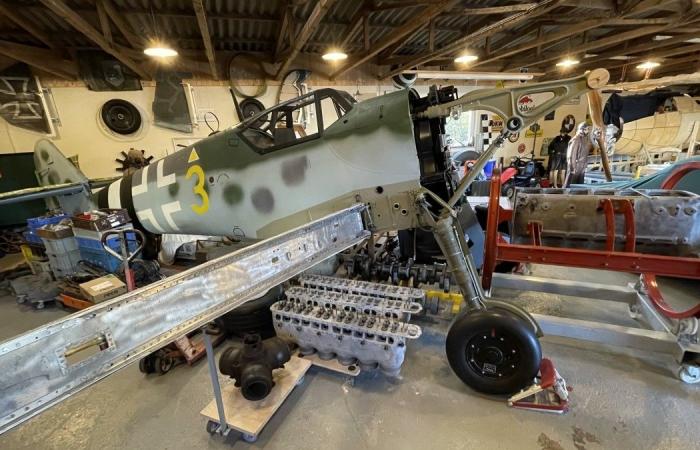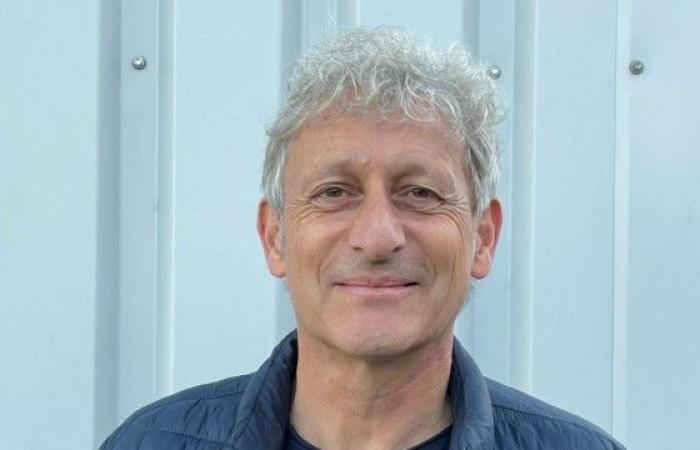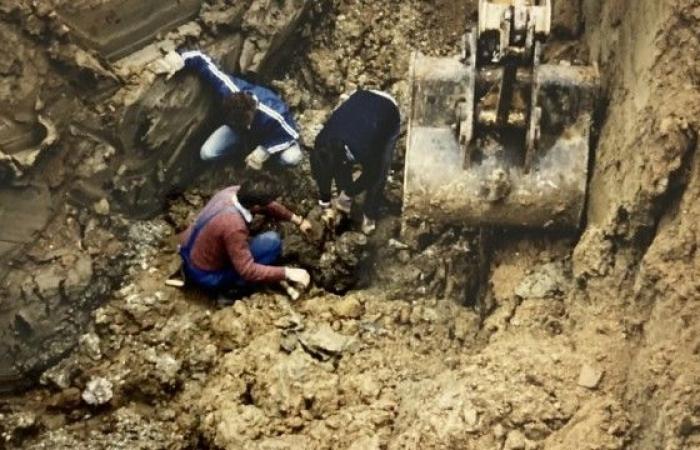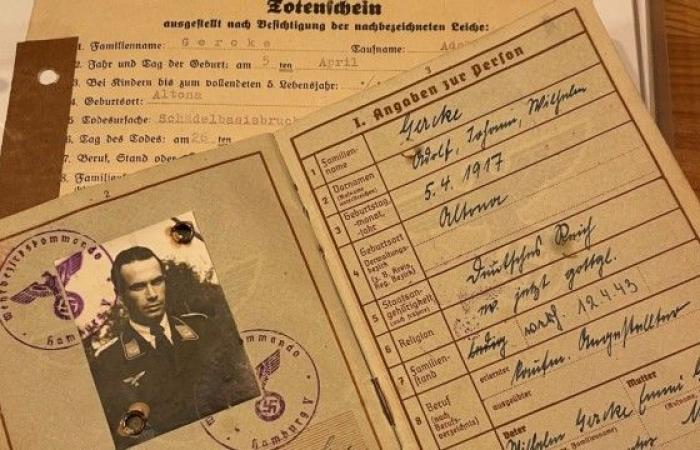He was almost home and basically it was all over. Nevertheless, it still caught him, on May 8, 1945. The commander had dismissed his pilots, they were allowed to get into their fighter planes and simply fly home – the Second World War was over for the Germans. But Walter Abbrederis did not survive this flight home. Americans shot him down near Lake Ammer, although according to eyewitnesses he was still shaking his wings to show that he was no longer a danger. His widow only found out that her husband was missing. She didn’t know where his body was. Until Gunter Lauser reconstructed the story many decades later, located the crash site in Ingenried and dug up the mortal remains of the pilot and the remains of his fighter pilot. The widow was there – she only found out late that her husband had actually survived the war and was only on his way home when he finally died.
It is these stories that drive Gunter Lauser. He has already dug up more than 50 fighter pilots who simply got stuck in the ground and were forgotten after the end of the Second World War. He recovered the mortal remains of seven missing pilots – and made the bereaved and descendants happy, who until then did not know how and where their father, husband or brother had died. “The basic intention is to clarify the fate of missing people,” says Lauser about his unusual hobby.
With his aviation history working group, he is mainly looking for missing German fighter pilots in Bavaria and Baden-Württemberg, sometimes it is tedious detective work. 800 to 1000 machines, some with the mortal remains of the pilots, are still missing in Germany. “It sounds inconceivable that such a plane would disappear without a trace,” says Lauser. But when people were in the air-raid shelter when the air-raid alarm went off, they didn’t notice the shooting down. And an airplane with an engine weighing up to 700 kilograms that crashes from a height of 5,000 meters bores many meters deep into the earth.
Lauser is 57 years old today and has been interested in flying since he was a child. His uncle was a sports pilot, he died in an accident. Lauser is working through the crash, he read a lot about flying, including a book about a missing persons searcher who was active in the 1960s. He didn’t yet have a driver’s license when he wrote to all communities within a radius of 30 kilometers of his Swabian homeland for information about fighter plane crashes. “I got quite a lot of feedback.” So he dug up his first World War plane in a field where there was even a cross to commemorate it. “The pilot was shot down in February 1945 and was still underground in 1989,” Lauser is still amazed today. “But no one was interested.”
Gunter Lauser is 57 years old – he has been interested in missing planes since childhood.
(Photo: Florian Fuchs)


Peter Schell painstakingly reconstructs the Messerschmitt Bf 109 in a large machine hall in Feuchtwangen.
(Photo: Florian Fuchs)
Lauser found comrades-in-arms, and he learned from them: During the first excavation, the patrol officers who were summoned didn’t really know what to do with the bones. Today, Lauser cooperates with the German War Graves Commission, which provides him with reburial boxes and then arranges everything else for a burial. Whenever he digs, Lauser takes a box filled with sand with him, in which he puts the ammunition that is still live. “Then the explosives squad won’t have to move out.” He now also has two probes to be able to precisely locate the planes at all. The property owners and the people in the area, he says, are usually helpful: there is always someone who has an excavator and can help with the digging. The pits needed to dig out a Messerschmitt have a diameter of four meters.

When Gunter Lauser and his colleagues locate a machine, they usually have to dig a pit about four meters in diameter.
(Photo: Gunter Lauser)
A copy of what is probably the best-known German fighter pilot from the Second World War, a Messerschmitt Bf 109, is in a large hall in Feuchtwangen with Peter Schell. Since 2003 he has been building the machine faithfully to the original, something you rarely see in Germany. Lauser and Schell became good friends through their passion for flying. Schell knows the nameplate of his plane, he knows who flew it and in which unit. Two years ago, Lauser came up with childhood photos of the pilot. “Sisters still lived there.”
They don’t want to have anything to do with die-hards. Schell is fascinated by technology, he also builds a replica of an airplane from the First World War. Lauser is interested in the unexplained fates, he has already spoken to more than 1000 World War II pilots. “I learned a lot about the fears they suffered in action.” Again and again, Lauser receives pictures, awards, uniforms, and documents that help him with his research – and that trace the lives of the dead soldiers.

Surviving relatives and descendants often give Lauser personal documents of the dead pilots for his research.
(Photo: Florian Fuchs)
Lauser obtains the personal files of the pilots from the Federal Archives in Berlin and draws valuable information from the units’ reports of casualties. Sometimes he knows that a plane has crashed two kilometers east of a place, then the search is not difficult. He knows exactly where the crash site was at Ammersee, but it is in a nature reserve in a bog – impossible to dig there. But sometimes it just says: “19.7.1944, enemy flight, location unknown”. A lieutenant named Karl Müller was shot down that day between Kempten and Memmingen. This is so broad that only testimonies would help here: Many have already contacted him about this, but it turns out that all of the kills meant on July 18, the day before when the Americans flew a massive attack in the region – that didn’t help.
Lauser hasn’t dug up a plane for years because the authorities are now demanding a large number of permits, and things have gotten complicated. The Müller case is one that Lauser would do the work on again, he knew his sister, he has letters from the pilot, photos. But the witnesses are rare. Lauser is particularly dependent on people who, at the time of most of the killings at the end of the war, were too young to have to go to the front themselves, but old enough to remember.
Lauser once located a pilot whose brother in Vienna didn’t know where he was until that day. A few weeks later the whole family stood at the grave in Baden-Württemberg. In another case, a pilot even had a grave in Hamburg, the widow believed her husband was buried there. When Lauser found his machine, he discovered a tamper, a pistol, the dog tag and a photo of the daughter. It was clear that the pilot had crashed his plane. In consultation with his daughter, however, Lauser did not explain to the widow that she probably would not have been able to cope. Instead, the daughter later came to the crash site and to the pilot’s grave that had been set up nearby and was now real. “She was grateful that she could say goodbye,” says Lauser. “Something like that is just very touching.”







